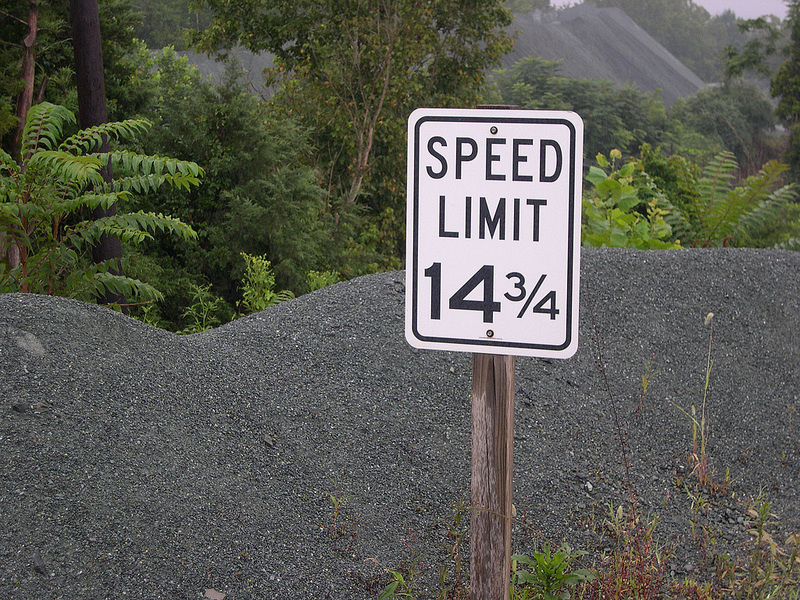| At the dawn of Utah’s new claim to the title of commuter speedway capital of America, I decided to do some dangerous field research. It was mere coincidence that this coincided with the release in the Senate, that very morning, of a report on the CIA’s torture of alleged terrorists. Thus, the radio spewed descriptions of mutilations and unspeakable horrors as I headed toward I-15 only hours after workers had posted new 70 mph speed limit signs for the Wasatch Front. |
| | And I was with nothing but a seat belt and a flimsy cap on my head, feeling more vulnerable by the minute. I had rummaged through the basement, but a proper racing helmet was nowhere to be found. As California Sen. Dianne Feinstein droned on about waterboarding under the Bush administration, a feeling of frustration nearly overwhelmed me. Traffic along the onramp was entirely too slow for me to get up to the freeway’s new death-defying speed. I struggled to reach 60 as I merged into traffic, only to be forced to tap the brakes behind a line of cars that obviously hadn’t paid attention to the good news on the new signs. I began to feel sympathy for those CIA guys. Then, eventually, I maneuvered to lanes on the left, each time increasing speed slightly, finally hitting 70, and then, (Oh the freedom!) briefly 80, as I kept up with people ahead and behind. But then we slowed again. One impatient driver in a Beemer convertible darted in and out of lanes, searching in vain for either a 90 mph speed limit sign or the clearing that would bring him to the checkered flag in record time. It was, in other words, the same experience I would have had a day before, when the speed limit was 65. It was quite similar to experiences I had when I first moved to Utah in 1986 and the speed limit was a congressionally prodded 55. Except, of course, that the freeway was much more dangerous then. You can look it up. Critics of higher speed limits like to hit me with well-worn words of wisdom. “Speed kills,” they say. Well, yes, it is true that a higher percentage of traffic accidents at higher speeds result in death than those at lower speeds. That’s a matter of physics. It’s also true, according to Utah government statistics, that the highest percentage of fatal accidents occur when people are driving 10 to 19 mph faster than the speed limit. And it’s equally true that fatalities are up in Utah this year — 238 through November versus a five-year average of 218. It’s also true that none of this is relevant to the discussion of the new 70 mph speed limit along the Wasatch Front. Speed may kill, but variable speeds cause accidents. “What we’re trying to do is create a more uniform traffic flow,” Utah Department of Transportation spokesman John Gleason told me after I had safely pulled off the road and called him. “People will drive at the speed at which they’re most comfortable.” Before the state decided to raise the limit to 70, UDOT researchers did what researchers around the country do before making such decisions. They studied traffic patterns and determined the speed at which 85 percent of all drivers were driving, regardless of the posted speed limit. That turned out to be around 70. In other words, nothing has changed. That is, with one exception. We no longer will have scofflaws going 70 while people trying hard to abide by the law go 65. It’s that variable speed that causes accidents. Gleason reiterated what I’ve heard traffic engineers say for a while now. When Utah first lifted the limit to 80 in the central part of the state five years ago, speeds changed little. People inched up to 82 or 83. Much more than that and they wouldn’t feel comfortable. A UDOT official told USA Today the state saw a 20 percent drop in people exceeding the speed limit. That doesn’t explain the guy I saw darting around in the Beemer. But guys like that pay about as much attention to speed limits as criminals do to gun laws. |


 RSS Feed
RSS Feed

